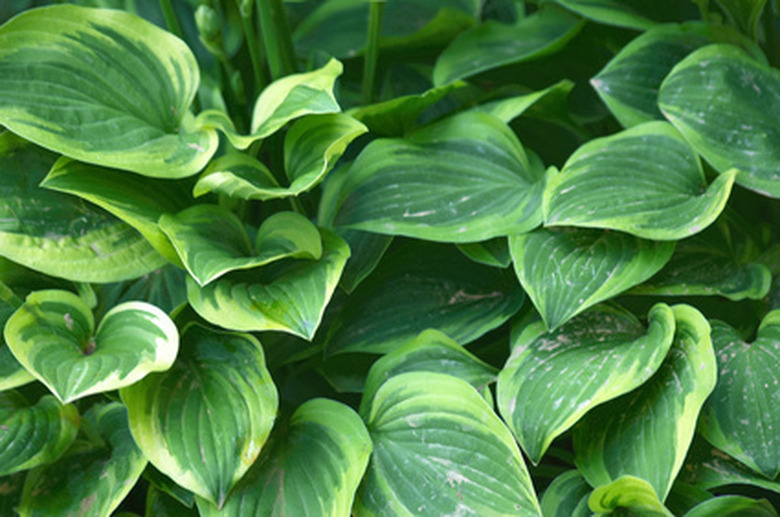Growing Hostas In Texas
Things Needed
- Water
- Compost
- Aged manure
- Slow release fertilizer
- Organic mulch
- Secateurs
Hosta is a genus of relatively low-growing, flowering perennial shrubs that grow up from underground rhizomes. There are over 1,000 hosta cultivars with unique foliage colors, textures and patterns, according to Texas A&M University. They thrive in shade or filtered sunlight and provide interest in the garden from spring through to fall. Texas is covered by USDA hardiness zones 6a to 9b and hosta are hardy in all of these zones, making them easy to care for in all but the hottest Texas climates in in the southernmost portions of the state.
Step 1
Plant hosta in partial to full shade conditions when growing them in Texas. Woodland gardens, tree understories, glens and shaded patio and loggia sites are all ideal.
Step 2
Provide a nutrient-rich humus soil that holds moisture well but not so much that water pools in or on the surface of the soil. Enrich the soil at planting with generous amounts of aged livestock manure and compost. Topdress established plantings with the same mix of organics once per year.
- Hosta is a genus of relatively low-growing, flowering perennial shrubs that grow up from underground rhizomes.
- There are over 1,000 hosta cultivars with unique foliage colors, textures and patterns, according to Texas A&M University.
Step 3
Fertilize hosta with a slow release, granular fertilizer that is complete and balanced with a guaranteed analysis of 10-10-10. Apply two to three times per year in spring, summer and fall according to the label dosing directions. Nestle the grains into the top few inches of soil surrounding the plants. Water until the soil is drenched to a depth of 6 inches.
Step 4
Mulch around the base of the plant with 2 inches of organic material such as shredded bark, cocoa bean hulls or leaf mold, renewing the mulch layer each year. Mulch is critical in the Texas landscape as it helps to hold moisture in the soil, insulates the roots from high temperatures, enriches the soil and keeps competitive weeds at bay.
Step 5
Prune away any dead foliage in the spring that does not survive the winter, making way for new leaves to grow and unfurl. Cut the leaves down at the crown of the plant. Prune away the spend flower stalks in the early summer after they fade. Again, cut them down at the base of the stalk, at the crown of the plant, between the leaves.
- Fertilize hosta with a slow release, granular fertilizer that is complete and balanced with a guaranteed analysis of 10-10-10.
- Mulch around the base of the plant with 2 inches of organic material such as shredded bark, cocoa bean hulls or leaf mold, renewing the mulch layer each year.
